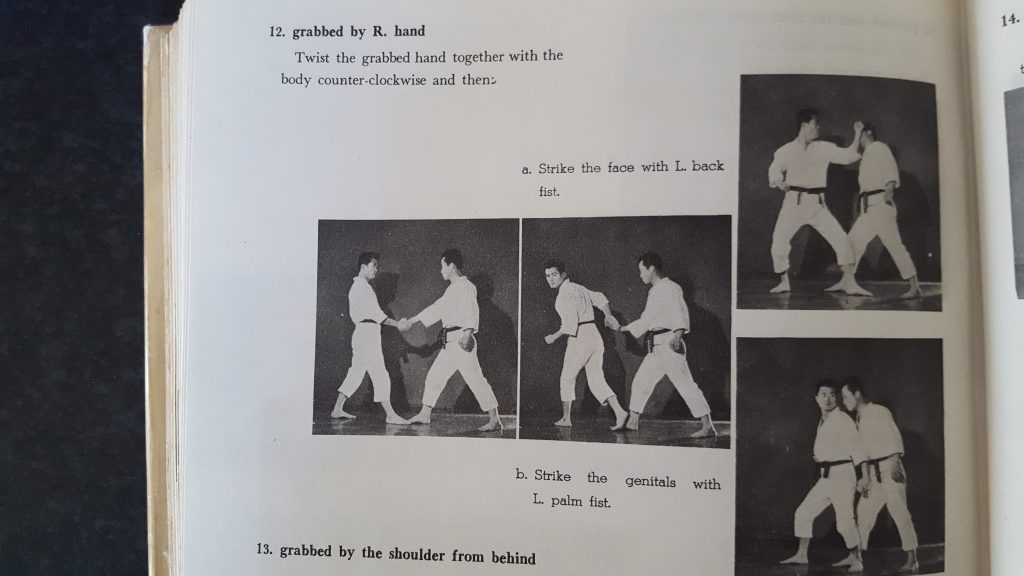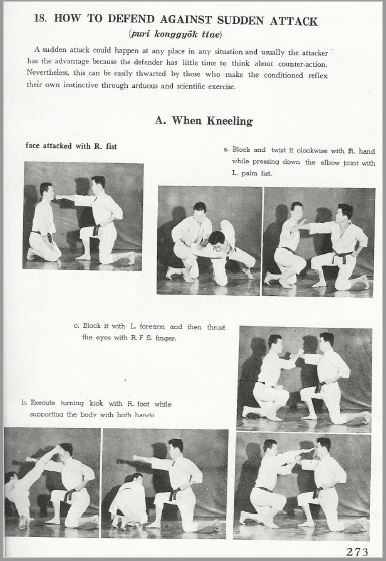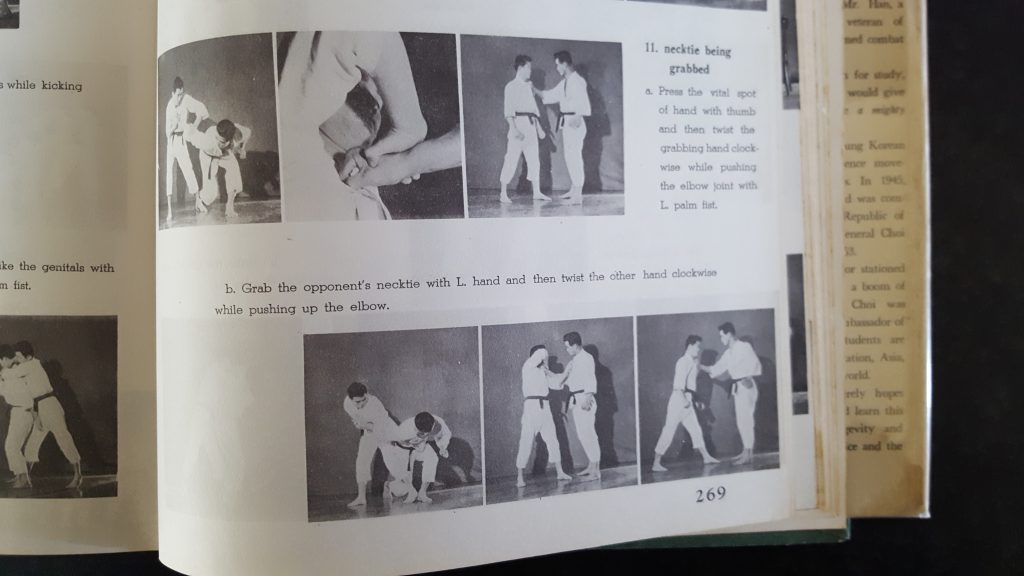Brendan Doogan 5th Dan, Dragon’s Spirit Papatoetoe

I’ve seen a strong current of thought recently that suggests the founders of tkd didn’t know what they were doing. That they didn’t fully understand the kata they learned. That the patterns they designed were crude rehashings without comprehension of the movements. That TKD is far more based on hidden throwing, locking, grabbing and joint breaking than on simple striking. That “real” tkd can be found by delving back, beyond even Japanese Karate to Okinawan ways.
I think this position is incorrect for several reasons.
- The creators of the tkd patterns were with one or two notable exceptions, karateka. They may have disavowed it, but that’s the truth. They trained in karate, which they learned from karate instructors. Karate then as now contains both striking and locking / grabbing / throwing. They learned both.
- Although the patterns mainly use strikes and blocks they also contain explicit defences against grabs, grabs, sweeps and locks. Do-San has the first explicit release from a grab – if it’s defended against it is part of the art’s expectation. Toi-Gye tul has an explicit head grab followed by a knee upward kick. Sweeping kick shows up in Sam-Il tul, as does a counter-grab and lock (#3). Striking and grappling methods are therefore both contained in the patterns.
- The self defence sections of most tkd books from the earliest to the latest, use throws, locks, grabs and joint breaks… and punches, strikes and kicks. Both, not hidden but rather on show.
- Ars longa, vita brevis. The patterns were the main vehicle for tkd knowledge transmission. There simply wasn’t time to teach every single part of the art while spreading it and standardising it throughout the world.
- It’s very much easier to stand in front of a group of people and instruct them in strikes, which can be done clearly and alone in the air. This doesn’t mean locks and throws aren’t part of the art, or aren’t known about – they’re just harder to teach so done less.
- The taekwondo’s are deliberate reconstructions, developments, acts of destroying clay vessels to make mosaics. They were adamantly changed from what went before. The Kukki path sportified well away from its karate roots, and the movement quality of Chang Hon Taekwon-Do is deliberately distinct to Karate. Backward motion for instance, is one of the Training Secrets of Taekwon-Do, but is avoided in kata.
- The self defence shown by the early pioneers on tour had plenty of throwing, locking etc. but also the smashing of boards with hands and feet. Both methods were clearly a part of the art they were presenting.
- There has been a tremendous increase in the number of techniques in TKD. In General Choi’s Chang Hon style Taekwon-Do books we can compare numbers of techniques 1965 : 1983. Hand tools went from 29 to 38, foot tools from 6 to 10, hand techniques listed increased from ~219 to over 1100, foot techniques from 89 [which was already a dramatic increase on those described in Karate] to nearly 400. Very much indicative in my opinion, of clever and creative people, not of ignorant and poorly educated martial artists.
- Some techniques were included in early tkd books then left out of later versions – techniques were thrown away. See for instance striking block, twisting block and pulling block, the last two being explicitly about grappling the opponent and the first one about hitting them. Again this speaks to me of deliberate, informed sculpting with vision, not half-guessed fumbling.

In summary I don’t subscribe to the belief that the founders were low ranking and relatively uneducated, and therefore didn’t know “real” karate, and haven’t therefore created “real” Tae Kwon Do. The above tells me that they deliberately crafted the Art away from its roots towards a vision of a new way. There are good reasons that grabs and throws are less done currently, mainly because strikes and kicks are easier to teach to a group. I strongly believe that grabs and throws are a fundamental part of the art – they’re not secret knowledge. A punch is a punch, a lock is a lock, a throw is a throw. Face value is fine.

All images from General Choi’s Encyclopedia
